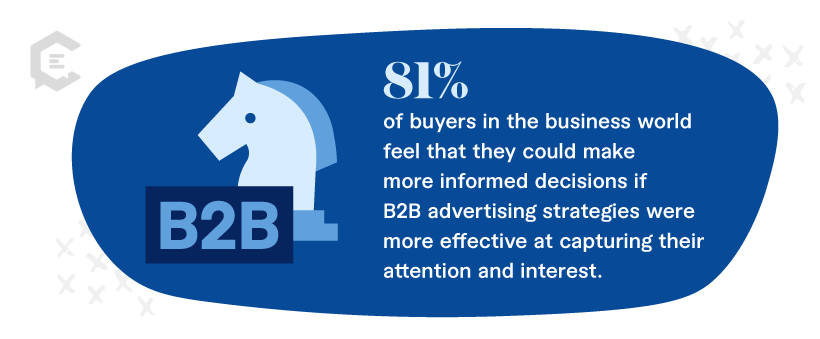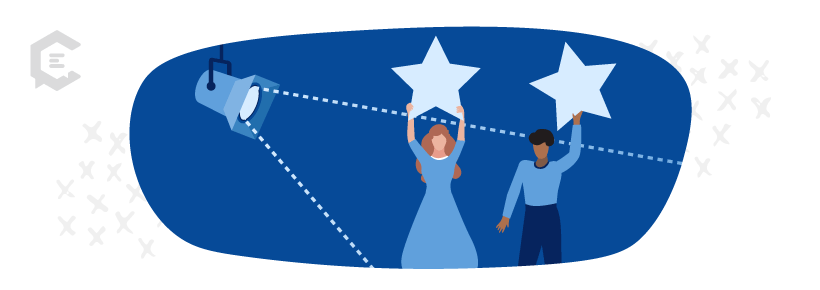Traditional advertising isn’t enough anymore. Consumers want to purchase from brands they feel connected to.
That’s where B2B content marketing is the difference maker.
It’s no surprise that more marketers are leveraging B2B content marketing to engage with their target consumers. 71 percent of B2B marketers say content marketing has become more important to their business.
In this guide, we’ll delve into the importance of B2B content marketing. We’ll cover its foundation and key elements to ensure you craft compelling B2B content that drives your business’s growth and success.

Understanding B2B Content Marketing
Before we get into specifics, let’s define what B2B Content Marketing is all about.
The definition of B2B content marketing
B2B stands for “Business to Business.” It centers on creating specialized content that targets specific businesses. B2B content marketing success begins and ends with understanding your audience. It’s not about pushing a product or service. It’s about establishing a meaningful connection and crafting strategic content that addresses their pain points and offers solutions.
Why pay attention
B2B content marketing goes beyond facts and features. It empowers businesses to forge strong connections with their target audiences.
You can see this at work in advertising campaigns that inspire, or relatable narratives weaved into product packaging.
B2B content marketing offers some key advantages:
- Captivates and engages a target audience
- Differentiates a brand from competitors
- Builds trust
- Simplifies complex information
- Increases customer retention
- Drives brand advocacy
- Makes the content more shareable
It’s important to your brand’s success
Consumers aren’t the only ones that care about brands. Businesses do too:
81 percent of buyers in the business world feel that they could make more informed decisions if B2B advertising strategies were more effective at capturing their attention and interest.
Source: Kurve
That number really stands out. But that’s not all:
- 97 percent of marketers use content marketing as part of their marketing strategy
- 90 percent of B2B buyers research 2-7 websites before making a purchase
- 76 percent of B2B companies have a formal marketing plan
- 67 percent of B2B buyers start their purchase journey online
Source: Kurve
With those types of numbers, you need to ensure your B2B content is high-quality and consistent across the board. Here are some techniques to help you out.
B2B Content Marketing Techniques
One of the best B2B content marketing techniques is the use of storytelling. Let’s break down how it can elevate your content.
Begin with a compelling hook
Make your B2B content hard to ignore. Open with a captivating hook that immediately draws readers in.
Examples are an intriguing anecdote or a thought-provoking question. By instantly creating an intellectual or emotional connection, you set the stage for an engaging storytelling experience.
Leverage customer testimonials and case studies
The human brain prefers happy endings. Storytelling in your B2B content marketing can give your audience just that.
Share testimonials and case studies. Specifically, ones that talk about your customers’ real-life experiences and successes. Showcase how your products or services impacted them. Begin with the challenges they were trying to overcome. And end with the solutions that helped.
Customer-led storytelling helps to establish credibility. It also shows audiences that they can achieve similar results.
Create narratives around a central character
Your story’s central character or persona should represent your target audience or ideal customer. Also, their motivations and challenges.
Weave their journey throughout your content. And showcase how your B2B solutions are helping address their pain points.
This approach makes your brand relatable and your message easier to connect with.
Incorporate emotion
Use elements such as conflict, resolution, and emotion to craft a compelling story arc.
Build tension by underscoring the challenges your customers face. Then, present your product or service as the solution that saves the day.
Use visuals
Enliven your storytelling with visuals and multimedia elements, such as:
- Images
- Infographics
- Graphs
- Charts
- Videos
- Interviews
- Animations
- Interactive elements
Visuals make storytelling more memorable and appealing. They also make complex information more easily digestible. Plus they transform the storytelling into a multi-dimensional experience.
The Impact of Strong B2B Content
B2B content marketing affects your brand in a number of ways. Here are the top benefits.
It humanizes your brand
Let’s say you’re rolling out a B2B marketing campaign that highlights the journey of a small business owner. In your content, you can illustrate the entrepreneur’s challenges, aspirations, and triumphs. All in a fun and engaging way.
Impactful narratives humanize your brand.
Potential clients will likely see themselves in the struggles and aspirations of your campaign’s central character. This emotionally bonds them to your brand. Potentially seeing you as a company that understands their needs and shares their values.
Puts the spotlight on real-life successes and applications
Your content can highlight companies or clients who have achieved significant results through your products or services. Focus on their challenges, the solutions you provided, and the resulting positive outcomes.
Aside from demonstrating how to use your products or services, this approach illustrates to potential customers the benefits they can expect from your brand.
Boosts engagement
B2B content marketing lets you tap into the emotional and cognitive faculties of your audience.
Traditional marketing approaches often focus on features and benefits. But personalized content that emphasizes storytelling lets you create immersive audience experiences that:
- Capture attention
- Establish relatability
- Foster emotional connections
- Enhance information retention
- Spark conversations
- Differentiate your brand
Influences decision-making
Below are some ways B2B content can influence decision-making:
- Demonstrate relevance and value: Showcase real-world scenarios. These can help decision-makers understand the relevance and potential benefits of a particular solution.
- Simplify complex concepts: It makes them more accessible and relatable. This helps decision-makers come up with informed decisions.
- Build credibility and trust: Decision-makers will more likely work with businesses they trust. Stories about successful partnerships, client achievements, or industry expertise establish an organization’s authority and credibility. This also positions them as trusted advisors.
- Influence stakeholders: B2B decision-making often involves multiple stakeholders. Each may have different priorities, concerns, and decision criteria. B2B Content helps craft narratives that address each stakeholder group’s specific needs. This allows B2B companies to gain support for their solutions.
- Establish a competitive edge: Decision-makers are more likely to remember and pick companies that communicate their distinct advantages through storytelling.
Top B2B Challenges to Watch Out For
The right B2B content marketing strategy can be the difference maker in your company’s success. As you’re strategizing, don’t forget to anticipate these top three challenges so you’re not stopped in your tracks.
Real-World Examples and Case Studies
Still wondering how you can incorporate B2B content and storytelling into your next marketing campaigns? Here’s a look at how some of the well-known companies are doing it:
Cisco
Cisco is a networking and communication solutions company. It successfully employs storytelling through its “Human Network” campaign. The campaign tells stories of Cisco technology. And how it connects people and enables meaningful interactions.
Through real-world stories of collaboration and innovation, Cisco effectively communicates the value of its solutions.
Adobe
Adobe uses storytelling to showcase the human side of its brand. Its “Adobe Life” campaign shares stories of employees, their passions, and the impact they make within the company and for Adobe’s customers.
This approach makes the company more relatable to customers and potential employees.
Intel
Intel uses storytelling to showcase applications and successes via its “Intel Inside” campaign. The campaign illustrates real-life scenarios. For instance, how Intel’s processors enable breakthroughs in fields like healthcare, entertainment, and artificial intelligence (AI).
Storytelling illustrates beautifully the potential impact and possibilities that Intel’s technology can offer.
Mailchimp
Mailchimp uses storytelling to boost engagement through its “Mailchimp Presents” series. It focuses on inspirational stories that highlight the challenges, successes, and experiences of small business owners.
Using videos, podcasts, and articles, Mailchimp leverages B2B storytelling to build a community of engaged customers.
Start Leveraging B2B Content Marketing Today
Alright, that’s a pretty detailed start for your B2B content marketing. This framework should help you maximize your B2B content’s effectiveness and drive engagement. But if you want to elevate your B2B content even more, ClearVoice has you covered.
Sometimes, the smartest and most cost-effective solution is partnering with a proven content agency like ClearVoice. Talk to a strategist today to see what we can do for you.










